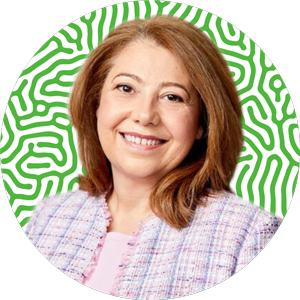Australia, like many countries, has a leadership problem that’s hiding in plain sight – the critical group being overlooked is our middle managers.
Burnout Is Not Just Being “Tired”
The World Health Organisation defines burnout as chronic workplace stress that hasn’t been successfully managed. It shows up as:
-
Exhaustion — emotional and physical depletion
-
Mental distance from work — cynicism and disengagement
-
Reduced efficacy — feeling ineffective and unaccomplished
This isn’t about a bad week. It’s an occupational syndrome with serious consequences for individuals and organisations (WHO, 2019).
The Middle Manager Squeeze
Recent McKinsey research has revealed something crucial that many organisations are missing: middle managers and women leaders are experiencing disproportionately high rates of burnout. The data shows that “women—especially those who manage teams—are more burned out than men” with significant gaps emerging in recent years. (McKinsey & LeanIn.org, 2021).
Why? Because they are the organisational “shock absorbers” — supporting their teams, managing up to executives, and carrying increasing workloads, often without authority or recognition.
In Australia, the crisis is even more severe:
-
61% of workers report burnout vs. 48% globally (Mental Health First Aid Australia, 2024)
-
44% of managers report frequent burnout — higher than frontline staff or executives (TELUS Health, 2024)
-
$14 billion lost annually in burnout-related absenteeism (Mental Health First Aid Australia, 2024)
And the hidden cost? Burnout erodes decision-making capability in 70% of leaders, weakening organisations from the inside out (HR Leader, 2023).
Why It Matters for Leadership Pipelines
Middle management is the breeding ground for future leaders — yet 86% of high-potential employees are impacted by burnout, and intent to leave among this group has jumped significantly (McKinsey & LeanIn.org, 2021). If we don’t address this now, tomorrow’s leaders will simply walk away.
Coaching as a Solution
Unlike wellness programs that treat symptoms, coaching tackles root causes:
-
Building capability — stress management, boundaries, decision-making
-
Shaping culture — leaders who model balance reduce burnout in their teams by up to 70% (Frontiers in Psychology, 2023)
-
Driving ROI — training alone lifts productivity 22%; combined with coaching, it jumps to 88% (Frontiers in Psychology, 2023)
Three Steps HR Leaders Must Take
- Audit middle management — use validated burnout assessments, not generic surveys.
- Invest early — focus preventive coaching on high-potential managers most at risk.
- Fix the system — adjust workloads, clarify roles, and formally recognise wellbeing leadership (Safe Work Australia, 2024).
The Bottom Line
Burnout isn’t just a wellbeing issue. It’s a strategic threat to leadership capability and organisational performance. Companies that act now to support and coach their middle managers will retain talent and build sustainable, high-performing cultures.
The question isn’t whether you can afford to invest in preventing leadership burnout — it’s whether you can afford not to.
Sources
-
HR Leader. (2023). 81% of the Australian workforce battles stress and burnout in silence.
-
McKinsey & LeanIn.org. (2021). Women in the Workplace 2021.
-
Mental Health First Aid Australia. (2024). Navigating burnout.
-
Safe Work Australia. (2024). New report on psychological health in Australian workplaces.
-
TELUS Health Australia. (2024). TELUS Mental Health Index.
-
Frontiers in Psychology. (2023). Coaching leaders toward favorable trajectories of burnout and engagement.
-
World Health Organisation. (2019). Burn-out an “occupational phenomenon”: International Classification of Diseases.
Christine Khor is a Master Coach and founder of Peeplcoach. With 25+ years of CEO experience, she works with organisations across Australia to develop sustainable leadership capabilities that prevent burnout whilst driving performance.











































